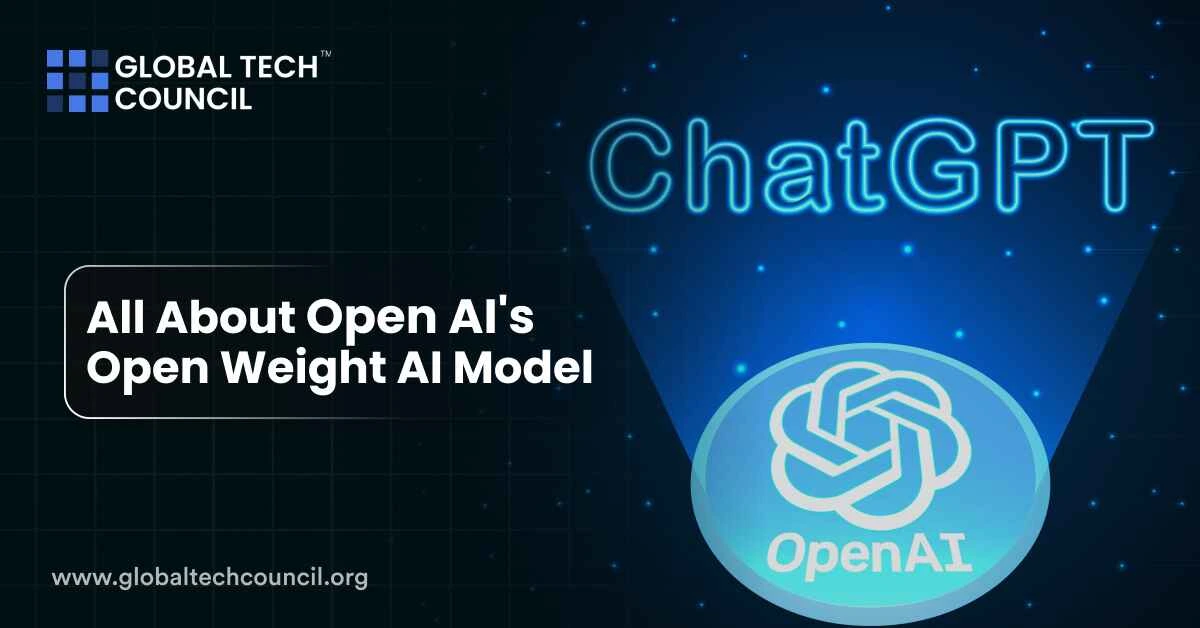
This move signals a more open approach than what OpenAI has done in the past.
What Makes Open-Weight AI Models Different?
An open-weight model gives users access to its trained parameters, also called weights. These weights shape how the AI responds to the data it receives. With access to them, developers can build tools, fine-tune models, and create new use cases.
But here’s the key difference — it’s not the same as open-source. Open-source models usually share everything: the training data, code, and methods. Open-weight models don’t go that far. They only offer the final result — the weights — not how they got there.
This lets developers work with the model. At the same time, it helps companies protect their original training process. If you’re exploring OpenAI’s Open Weight model, having the Certified Agentic AI Expert™ certification will give you an edge in understanding its applications.
Why Is OpenAI Changing Its Approach?
OpenAI has usually kept its models closed. After GPT-2, they chose not to release weights for most of their work. But that’s about to change.
In March 2025, CEO Sam Altman shared plans to launch an open-weight model. It will be the first of its kind from OpenAI since GPT-2. He mentioned that they’ve wanted to do this for some time but had other things to focus on. Now, the timing feels right.
This model is expected to show stronger logic and reasoning. That makes it one of the more advanced tools OpenAI has shared with the public.
What Pushed OpenAI To Make This Move?
Staying Ahead In The Race
OpenAI’s competitors are moving fast. Some, like China’s DeepSeek, have already launched open-weight models. These releases show that there’s real interest in more accessible AI tools.
OpenAI doesn’t want to fall behind. Releasing an open-weight model keeps them in the game and shows they’re willing to shift with the times.
Working With The Developer Community
Open-weight models help developers take part in building better AI. By giving access to these tools, OpenAI invites coders, researchers, and hobbyists to join the work. This way, the AI grows in ways one company alone couldn’t predict.
When many minds work on one model, it can lead to faster progress and more creative ideas.
Sharing But Still Protecting
With open weights, OpenAI finds a middle ground. They’re offering value to users without giving away everything. The training data and exact setup stay private. But people still get enough to build something new or adapt the model to fit their own needs.
How Will This Affect The AI World?
More Custom AI Tools
Developers will now be able to use OpenAI’s model as a base. Then, they can tweak it for specific industries or tasks. Whether it’s used in healthcare, finance, or retail, these custom versions could solve more precise problems.
Saving Money And Time
Training AI from scratch is expensive. It takes powerful machines and months of work. By using a ready-made model, businesses can skip the hard part. They can just fine-tune what’s already there.
That makes high-quality AI more affordable for smaller companies too.
Risks And Safety Concerns
Giving the public access to powerful tools brings up some worries. How can we stop misuse? Could someone adapt the model in harmful ways?
These are real concerns. That’s why there’s a growing need for clear rules. Developers and companies alike must build with care and consider how their work might be used. To work effectively with OpenAI’s open-weight model, becoming a Certified Agentic AI Developer™ can provide you with the right foundation and insights.
Conclusion
Releasing this model marks a turning point. It shows that OpenAI is open to change and willing to work with others. By sharing these weights, they invite fresh thinking and shared progress.
Still, challenges remain. They’ll need to watch how the model is used and stay ready to make changes if problems show up.
OpenAI has said they’ll balance access with responsibility. That means supporting users while guarding against harm.
Leave a Reply